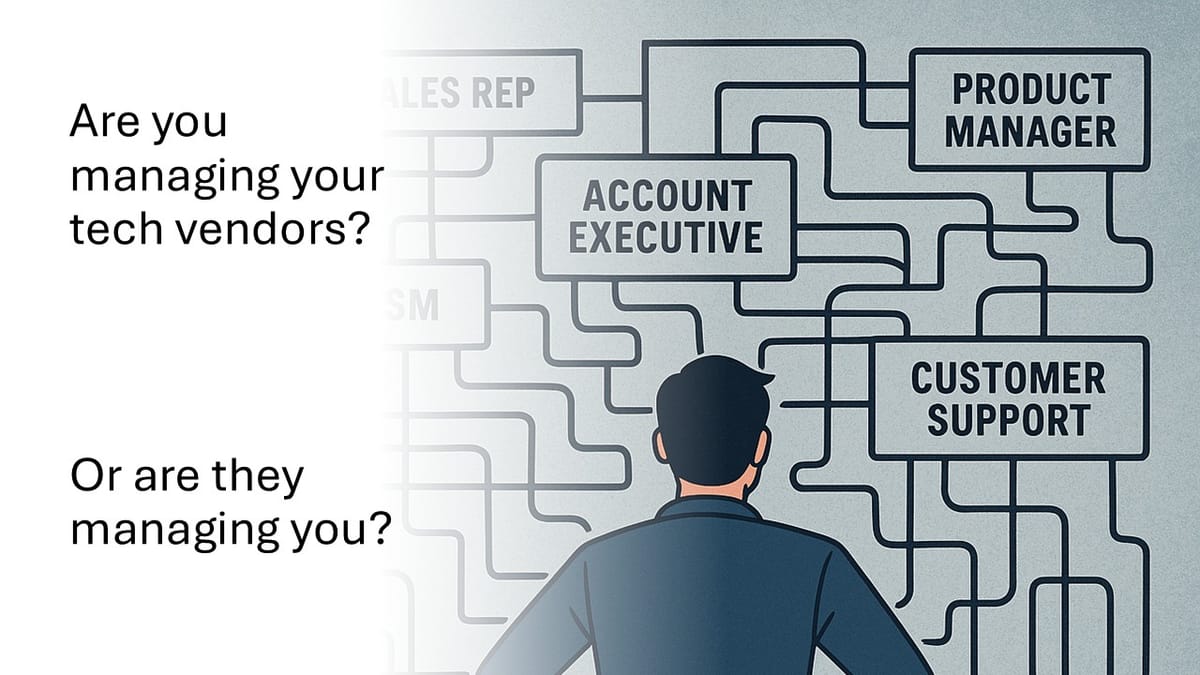Manage Your Vendors—or Be Managed by Them

Too many ABA providers are struggling to find software that actually works. Not because they’re clueless buyers—but because the market itself makes it hard.
You have legacy platforms that “work” in the sense that claims go out and sessions get logged. But they often struggle to keep pace with modern needs: integrations, analytics, AI. And then you have newer entrants—platforms that promise better workflows, automation, or visibility—but don’t always understand the operational realities of ABA.
In between, providers are left stuck. Sold by reps who don’t always understand ABA. Implementing tools that don’t fit their processes. And ultimately spending more time managing their technology than delivering care.
The Clinician’s Dilemma
I talk with a lot of providers who grew up as clinicians. They don’t understand why tech has to be so hard—and honestly, they shouldn’t have to. But in today’s environment, if you don’t actively manage your software vendors, you’ll end up being managed by them.
I recently met a decent-sized provider who had switched platforms twice in a single year—only to return to the system they started with. That’s not just a sunk cost—it’s emotional fatigue, staff confusion, and operational drag.
Tech Is a Relationship, Not a Tool
A good software vendor can create real differentiation for your business. But that only happens if you treat it like a relationship:
- Track your issues. Don’t just email support and move on. Maintain an internal issues log so your team knows what's pending and can follow up.
- Escalate when needed. Know when to loop in product, account management, or leadership—and have a point of contact who’ll take your call when the system goes down.
- Understand the roles. Sales, support, customer success, product, SME—these aren’t just titles. They each serve different functions, and you need to know who does what.
For smaller vendors, those lines blur. For larger ones, the roles are rigid. In both cases, someone on your team needs to own tech vendor management—whether it’s a COO, CIO, PMO, or fractional support partner.
Picking the Right Partner
When choosing a platform, don’t just look at the feature list. Look at:
- Strategic alignment. Are you adopting best practices—or trying to build something unique?
- Maturity of your ops. Can your team drive change, or do they need plug-and-play?
- Roadmap access. Will the vendor co-develop with you—or just put you in the queue?
- Contract flexibility. Can you structure pricing, user provisioning, and IP terms to protect your investment?
And always, always have a backup plan. Even the most promising vendor can pivot, run out of cash, or deprioritize your use case.
Make It Mutual
Done well, vendor relationships are win-win. You get the value you were promised. They get a smarter, better-informed customer who helps improve the product.
But that only happens if you stay engaged. Ask hard questions. Negotiate what matters. Give feedback. Build rapport. And when needed, play the “ask” card—for implementation help, feature prioritization, pricing leverage, or just plain responsiveness.
Stay Vigilant. Stay Curious.
The market is evolving. AI is reshaping documentation. Data integration is finally getting attention. And many vendors—both old and new—are still figuring out how to serve ABA well.
Attend conferences. Compare notes. And yes, read MissionViewpoint.com. We’ll keep surfacing vendor plans, provider perspectives, and tech strategies that can move the field forward.
Because if you don’t manage your vendors, they’ll manage you.



